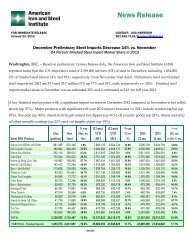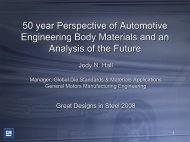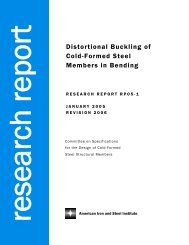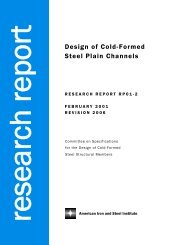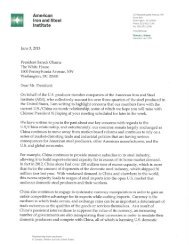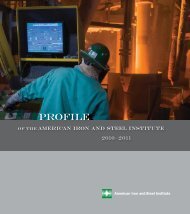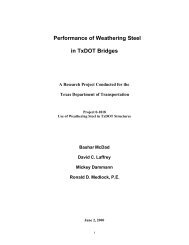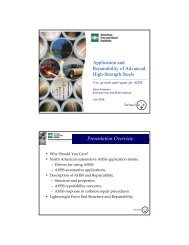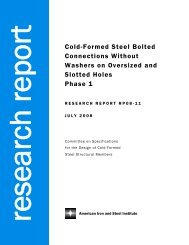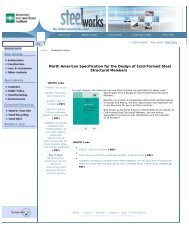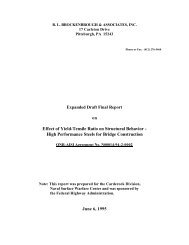Statistical Analysis of Structural Plate Mechanical Properties (Part 1)
Statistical Analysis of Structural Plate Mechanical Properties (Part 1)
Statistical Analysis of Structural Plate Mechanical Properties (Part 1)
You also want an ePaper? Increase the reach of your titles
YUMPU automatically turns print PDFs into web optimized ePapers that Google loves.
FORWARD<br />
This work was sponsored by the American Iron and Steel Institute (AISI) and was<br />
performed for the AISI Technical Committee on <strong>Plate</strong>s. In 1974, AISI published a report<br />
dealing with variations found in hot-rolled steel plate. Entitled “The Variation <strong>of</strong> Product<br />
<strong>Analysis</strong> and Tensile <strong>Properties</strong>: Carbon Steel <strong>Plate</strong>s and Wide Flange Shapes”, that<br />
report described the probability that tensile properties may differ among test locations<br />
within a plate other than the reported test location. In 1979 and again in 1989, AISI also<br />
published informational reports entitled “The Variations in Charpy V-Notch Impact Test<br />
<strong>Properties</strong> in Steel <strong>Plate</strong>s”.<br />
In 1998, the AISI Technical Committee on <strong>Plate</strong>s and Shapes included in their Workplans<br />
an item to update the aforementioned studies to reflect current mill practice. By the end<br />
<strong>of</strong> 1999, an acceptable proposal and format was developed with the University <strong>of</strong> Texas<br />
at Austin under the direction <strong>of</strong> Dr. Karl Frank, Department <strong>of</strong> Civil Engineering. Data<br />
was eventually collected from participating members <strong>of</strong> the AISI Committee and<br />
forwarded anonymously for inclusion in this study.<br />
The following report describes the extensive analysis <strong>of</strong> the current data that includes<br />
both tensile and Charpy V-Notch data. Due to constraints, complete chemical data that<br />
could compare differences in product analyses within plates and from plate to plate could<br />
not be accomplished by the participating mills. An excellent treatment <strong>of</strong> the results is<br />
detailed within this report. The overall values described in these results have changed<br />
greatly from the previous studies. This is mainly due to the effects <strong>of</strong> better quality and<br />
the fact that higher strength steels have become the focus <strong>of</strong> production now compared to<br />
thirty years ago when much <strong>of</strong> the data dealt with lower strength steels. It is important to<br />
note that while this is true, the variations encountered in the treatment <strong>of</strong> the data have<br />
remained largely comparable. One interesting observation on tensile properties is that as<br />
iii



